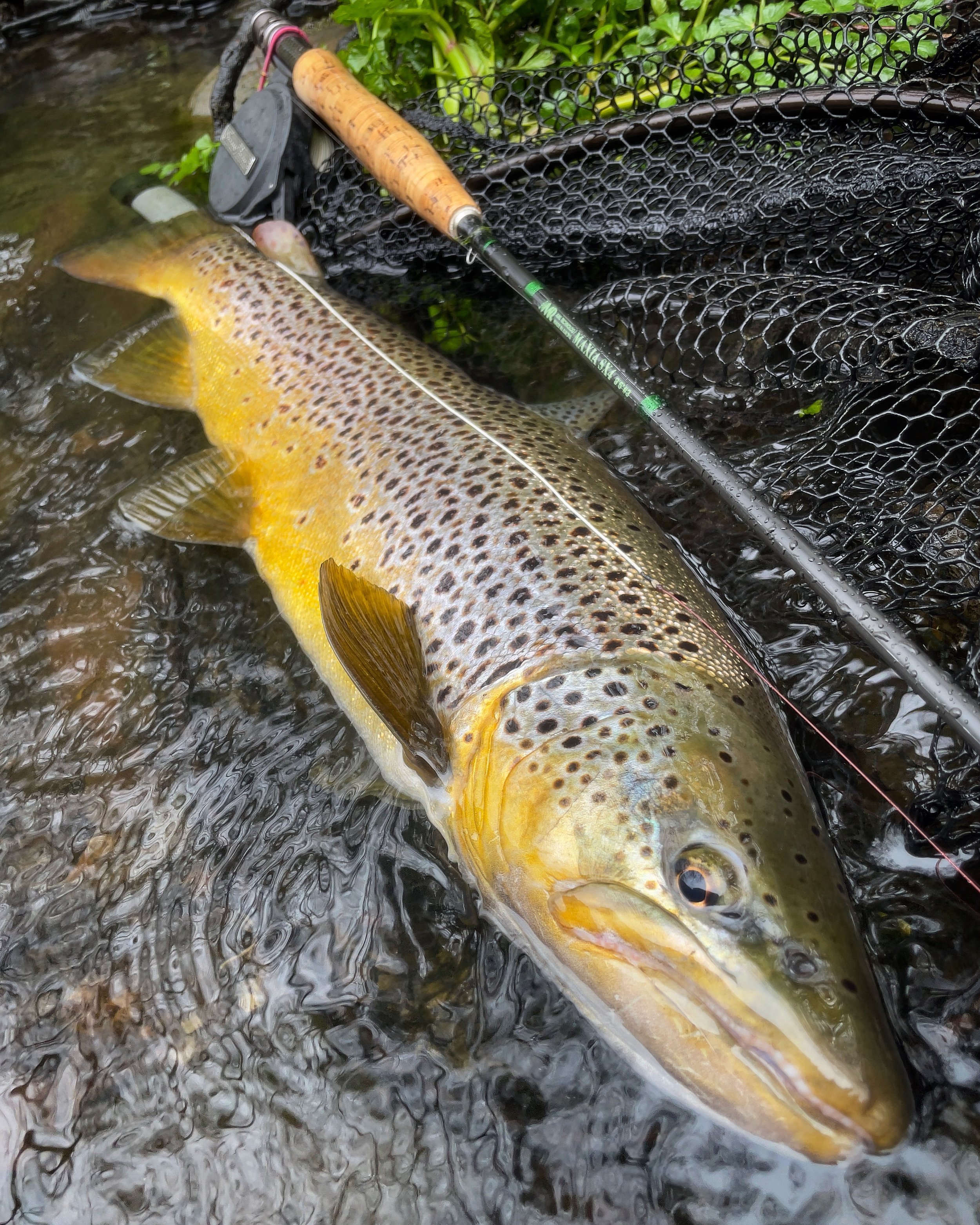
Kyle Cheshire
1. Choice of equipment Rods, reels, fly lines, fly floatants, clothes, glasses, and other useful items.
I like to use a Maxia SX 9’5 #3 fast actioned rod for all my dry fly fishing always paired with a semi automatic reel. I usually underline the rod with a #2 line but will use a #3 if wind is an issue, my line of choice is a Royal Wulff Triangle taper. I prefer lines with a short head, the longer headed ‘presentation’ lines do not suit my style of fishing. I like to use a powder floatant for my flies and a grease style floatant for my leader and line. I always try and wear drab clothing when fishing, wearing bright colours can easily alert a weary fish to your presence. I usually carry two pairs of polarised glasses, one with copper lenses for bright conditions and one with amber lenses for duller conditions.
2. Leader material, build-up, length and knots.
I like to make all my own leaders using Maxima Chameleon starting with 20lb (roughly 0.40mm) breaking strain and gradually tapering down ending in 5lb (roughly 0.16) and the length is around 9’. On the end of that I’ll attach around 7-10’ (depending on wind) of co polymer tippet. A lot of anglers prefer a longer leader with less tippet but I find the shorter leader combined with the long tippet section allows the business end to land in loose coils for longer effective drifts. I use blood knots to connect the different sections of leader and a small perfection loop on the end of the leader. I like to use a double Davy knot to connect my tippet to the leader and fly to the tippet.
3. Approach and stealth.
I’m 6’3 so always try and approach with as much stealth as possible, crawling in on my hands and knees if need be. Wild Trout can be very wary fish especially on the more pressured rivers so it pays off to creep into position as slowly as possible, especially if you have metal studs in your boots that can alert the fish to your presence before you’ve even made a cast. I always like to get as close as I can comfortably get to my target so that I can control my drifts better.
4. Reading the water.
Good watercraft is essential and learning to read the currents will help you decide which cast you will need to use and what angle to approach the target area. If ever I’m unsure I will make a few dummy casts below the target to help gauge what I need to do to get a drag free drift before making my actual cast.
5. Casting ability which casts are essential.
In my opinion you do not need to know a vast number of casting techniques to be a good dry fly angler. The four essential casts I think are needed are the basic overhead cast, reach cast, roll cast and a dump/pile cast, being able to perform these with precision over both the right and the left shoulder should cover you in almost every situation you’ll encounter on the river.
6. Entomology, what should we know.
You do not need a great deal of knowledge when it comes to entomology but learning to identify the insects that hatch on your rivers and the types of water and times of day they hatch is a skill that will benefit you greatly.
7. Rise forms Can they tell us something?
Yes, we can identity a great deal from rise forms for example - Wether the fish is taking emergers or duns, which way the fish is facing and also (but not always) the size of the fish.
8. Fly selection, Size, shape, materials, which flies are essential.
I usually fish simple cdc patterns, most of what I use is the same basic style of pattern in different sizes and colours to match the naturals that are hatching. Matching the hatch perfectly is not essential but matching the general size and silhouette of the fly you are trying to imitate is very important.
9. Presentation and drifts.
Presentation and drift are very important, you can have the best equipment in the world but if your line is landing heavy on the water and your fly is dragging then you will not be very successful. Nobody is perfect and everyone makes mistakes and sometimes you will get lucky and catch a fish with a poor presentation but more often than not it will result in failure.
10. Upstream or downstream?
For me it all depends on the type of water in front of me, if possible do not cast directly upstream onto the fish.
11. Fighting fish.
Once I’ve hooked the fish I always like to get below the fish, if if gets below you then you are fighting the current as well as the fish. If a fish gets below me into fast water then I will chase it and try and keep it on a relatively short line to get better control of it. I like to try and get the fish to the net as quickly as possible to reduce the amount of energy the fish exerts therefore ensuring the fish survives to fight another day and provide other anglers with the same joy I’ve gained from catching it.









